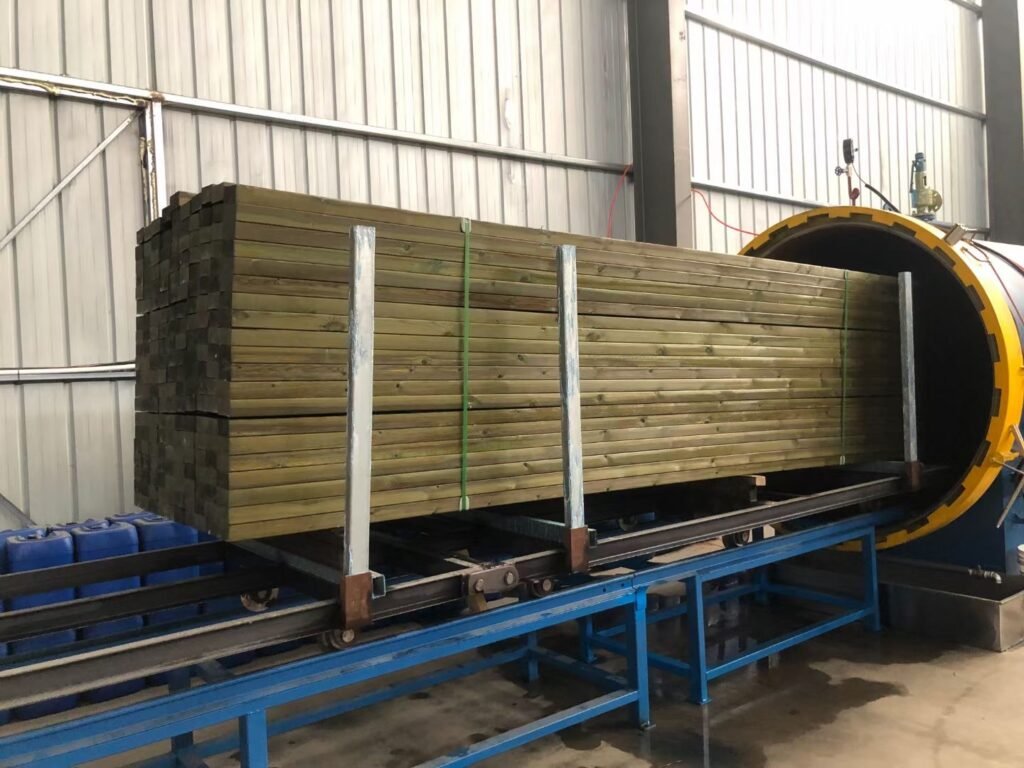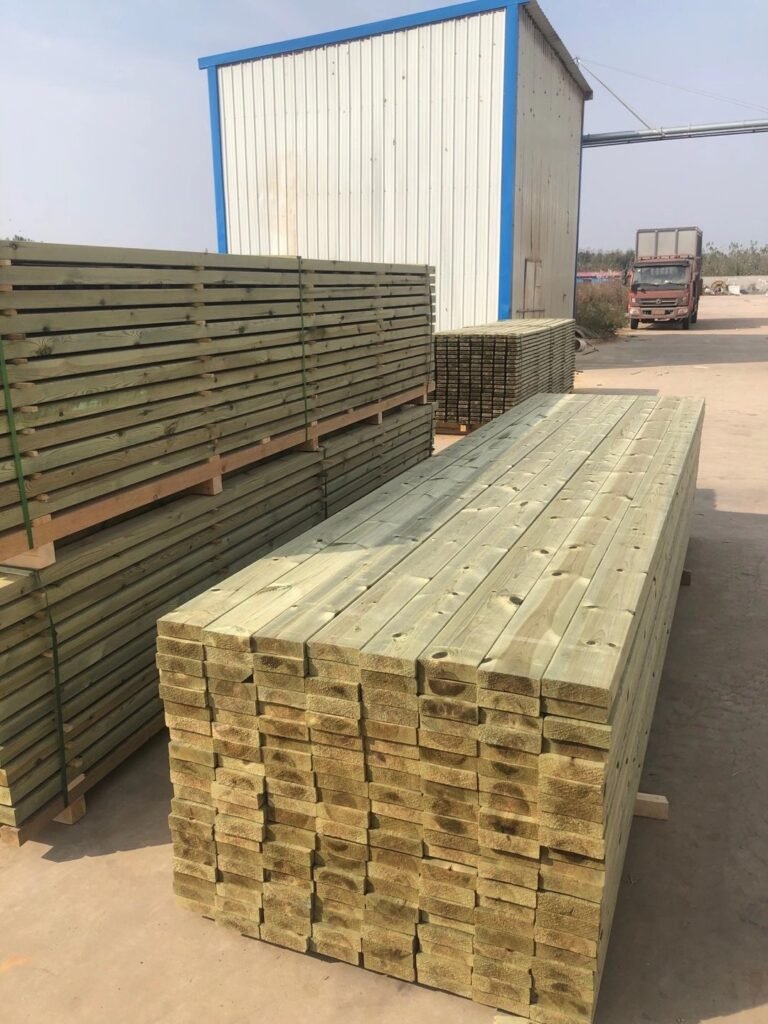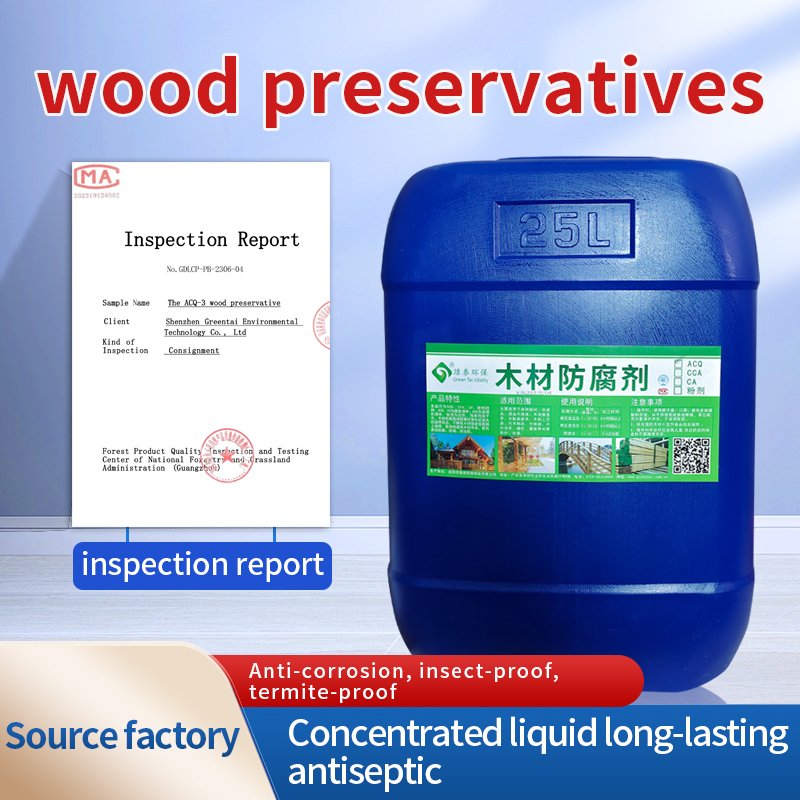Pressure treatment process
As a natural material, wood used in construction is exposed to the outdoors and faces serious threats from mold, decay fungi, and insects such as termites and wood borers. These organisms damage wood fibers, reducing the structural strength and service life of the wood.
Anti-corrosion treatment can form a chemical barrier to protect wood from these threats. Green Tai (CCA, ACQ, CA) wood preservatives not only act on the surface of the wood, but also penetrate deep into the wood by pressure or immersion to provide lasting protection. Therefore, the service life of wood treated with Green Tai (CCA, ACQ, CA) wood preservatives is extended from just a few years to 50 years or even longer.
There are many treatment processes, which can be sprayed, brushed or immersed, but for the best results, Green Tai (CCA, ACQ, CA) wood preservatives must be pressed into the wood fibers using pressure.

Wood Preparation
Preserved lumber manufacturers start by purchasing kiln-dried lumber from sawmills or specially selected logs from forestry companies. To meet state standards, the lumber must be in contact with the ground, and species like Douglas fir and hemlock must be sheared on all four sides before treatment. Shearing is the process of making small cuts in the wood to ensure adequate penetration and retention of the preservative.
The untreated lumber is then loaded onto carts and transported to a specially constructed cylinder called a lumber can. Lumber cans can be up to 150 feet long and are sealed and evacuated to remove air.

Injecting Preservative
Next, the preservative solution is pumped from the tank to completely fill the reactor. Continuous pressure is applied within the reactor to force the preservative to penetrate the wood cells. Treatment time depends on the wood species, the size of the product to be treated, the type of preservative used, and the expected exposure criteria for the final product.
The preservative is drained from the tank and a vacuum is applied to return excess solution to the tank for future use. The cart is removed from the tank and placed on a sealed drip mat to recover any preservative remaining on the wood.

Quality Control:
Representative core samples are collected and analyzed to ensure they meet quality and durability standards. Third-party inspection agencies also visit and collect core samples regularly to confirm the factory’s quality control measures.
Finished treated wood products are usually covered with top packaging and then transported to the factory’s storage area for transportation.

